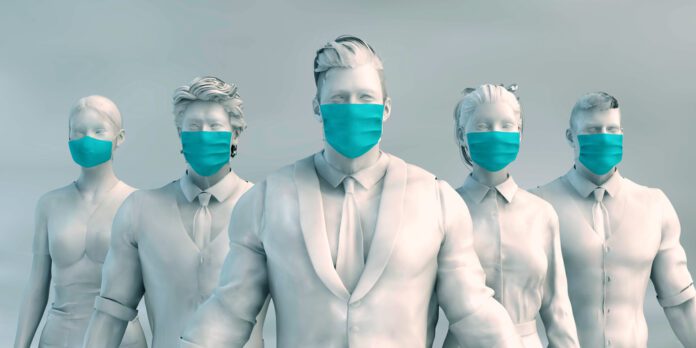Healthcare workers carry a heavy burden; their profession is extremely demanding and sometimes dangerous. No one that has not been in an Emergency Room can imagine the levels of stress associated with the job. In December of 2019 in Wuhan, China a new disease appeared. By January of 2020 this new disease, later known as COVID-19, this virus started to take over the world, spreading to every country by March of 2020. The virus spreads quickly and can be deadly. To this day, the healthy measures, pathophysiology of the virus, and long term side effects are unknown. When the COVID-19 pandemic started, healthcare workers were at the front of this new disease, in constant contact with infected patients. Guidelines from organizations like Centers for Disease Control and Prevention (CDC), changed constantly as new findings on the virus appear; making it almost impossible for health workers to be protected against COVID-19.
Reports of the World Health Organization (WHO) show that at least 17000 doctors have died from COVID-19 since the pandemic started. In the USA, 12000 health workers died during 2020, including doctors, nurses, and dentists. Besides the fact that innocent lives were lost, doctors and nurses have years of preparation and education, making them very hard to replace on the front lines against the virus. Is natural to as if there is anything we could have done to prevent this catastrophe, but the truth is that COVID-19 took the world by storm, and the lack of knowledge of the new disease caused a lot of deaths; however, in underdeveloped countries, socioeconomic challenges also contribute with the disease of healthcare workers. Looking back, some measures could have been taken to decrease the number of healthcare workers affected.
Preventative Measures That Could Have Eased The Death Toll Of Healthcare Workers
1. Provide Adequate Personal Protective Equipment (PPE):
PPE refers to all the required equipment that helps to prevent individuals from getting infected from the virus. At the beginning of the pandemic, the PPE was relatively simple, consisting of facemasks. As the days went by, it was clear that this was not enough, and other equipment was added such as gloves, body gowns, and goggles. And even then, organizations like CDC and WHO, often still release new protocols of PPE depending on the patient conditions. Needless to say that these regulations change pretty much everyday. The time that took to determine the correct PPE to prevent COVID-19 meant that healthcare professionals were exposed to the virus for longer.
Now, establishing the correct PPE is only step one. Authorities need to guarantee that the health workers also get the correct PPE needed. In third world countries and in some European nations the PPE was adequately provided to workers; personal testimonies of doctors and nurses showcase how they did not have enough PPE to be changed between patients, or they were lacking essential parts of the suit. This socio economic factor and the fact that COVID-19 hit an all time high last summer, caused the supply of PPE to be in high demand, and supply was not sufficient was not enough.
The dangers of working without PPE is the constant exposure to the virus. Every time that we breathe the water droplets contaminated with COVID-19, a number of virus molecules enter our body. the more exposure we get, the more particles will accumulate on the body. Studies showed that healthcare workers died of COVID-19 or had a much more serious infection because of the high concentration of virus on their system.
2. Complying with Quarantine Guidelines:
By April of 2020, most countries in the world started to put a quarantine in place. As a society, we could have done better in respect of quarantine regulations, done more to avoid large gatherings, and taken it upon ourselves to take additional measures for acting responsibly. Although many people took it very seriously, a percentage of the world saw this as an opportunity to travel at low cost. Because one person with COVID-19 can infect at least 10 people, isolation in quarantine keeps people apart and is a great way to reduce the virus spread.
3. Using a Face Mask
Right now it is still hard to imagine life without facemasks; but at the beginning of the pandemic, and still today, some people believe that the use of the mask is overrated and that it is not necessary. According to the WHO, the use of masks can reduce the spread of the virus by 60%, and when combined with social distancing this number is even higher.
The new COVID-19 took us by surprise, and we paid for our lack of knowledge with the widespread infection around the world. . Although nothing would have fully avoided healthcare workers’ deaths, following the rules and guidelines will have helped control the pandemic a lot faster. Right now, vaccinations are available, showing us that the ending of the pandemic is very soon, hopefully. Honor the healthcare workers that gave their lives to treat patients and study the virus by following the rules, and getting vaccinated.
The deaths of health workers are deeply mourned as we have lost key members of our communities. Their sacrifice should not be forgotten.





